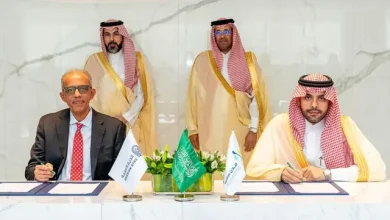
The International Monetary Fund (IMF) upgraded Saudi Arabia’s 2025 and 2026 economic growth forecasts on Tuesday, as oil price declines proved smaller than initially feared, driving this positive shift. Consequently, the IMF’s latest World Economic Outlook Update reflects renewed confidence.
The IMF now predicts that Saudi Arabia’s economy will expand by 3.6% in 2025, which represents a 0.6 percentage point increase from its previous GDP estimate in April. Among the 30 countries highlighted in the IMF update, only China’s forecast saw a larger increase.
Additionally, the IMF has revised its oil price forecast for 2025, as It now anticipates that crude prices will decline by approximately 13.9% this year, a slight improvement from the earlier forecast of a 15.5% drop. This adjustment reflects ongoing changes in the global oil market.
In June, Saudi Arabia raised its crude production for the second consecutive month, reaching 9.4 million barrels per day after the OPEC+ group of oil exporters began to unwind previous production cuts. Last year, these cuts reduced Saudi output to an average of 9 million barrels per day, the lowest level since 2010.
Government Borrowing and Infrastructure Funding
With oil accounting for nearly two-thirds of state revenue, lower production and subdued prices prompted the Saudi government to increase borrowing. This funding supports its ambitious infrastructure and diversification programs.
Oil prices experienced a temporary rise due to the 12-day conflict between Israel and Iran. However, the IMF report notes that this geopolitics-induced increase has largely receded, shifting focus back to bearish fundamentals.
Last October, the IMF projected a 4.6% increase in Saudi GDP for 2025. However, it revised these estimates downward in January and April due to falling oil prices and President Donald Trump’s announcement of sweeping tariffs on April 2. Trump has since cut or paused some of these tariffs until 1 August, with tariff on Chinese imports has decreased from 24% to 17%, according to the IMF.
These developments led the IMF to raise its global economic forecast to 3% from 2.8%, also increasing its estimate for 2026 to 3.1% from 3%. A sustained decline in the dollar has improved financial conditions in many emerging markets. Despite these higher estimates, the IMF report indicates that annual economic growth levels will remain below 2024’s 3.3% and the pre-pandemic average of 3.7%.
Risks Remain Elevated
IMF Chief Economist Pierre-Olivier Gourinchas stressed Tuesday: “Tariffs remain historically high, and global policy uncertainty persists.” He added that few nations have finalized comprehensive trade agreements. Consequently, risks to the global economy “remain firmly to the downside.” The current trade environment, he concluded, “remains precarious.”
As Saudi Arabia navigates these challenges, its economic outlook shows signs of resilience amid global uncertainties.





